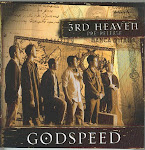
Marjorie Flathers is an accomplished author, and I'm proud to call her my friend. It is a delight to know Marjorie and a privilege to learn from her expertise as a writer!
This knowledgeable free-lance writer has been published for over 27 years! Marjorie's work has appeared in print well over 300 times in a variety of magazines, newspapers, e-zines, and anthologies for writers and knitters. This writing pro has a degree in English, and is a source of inspiration as well as knowledge about the world of publishing. She has graciously permitted me to present another helpful post for those of us who are just a bit too wordy! If you want to make every word count---pay close attention!
Here's Marjorie:
Years ago, when I was just beginning my writing career, I heard the advice, “Make Every Word Count.” I tried to put this tip into practice, with varying degrees of success. But, about 8 years ago, when I began writing short, short (300 words!) stories for the “Kids’ Reading Room” page of the Los Angeles Times, I knew it was truly time to make these words of wisdom work. In other words, this was when push came to shove!
At first, I didn’t think I could write a complete story (beginning, middle and end) with such a limited word length. I was already writing the longer (1500 words) 5-part serialized stories for that page. This was my specialty, I thought. But then the Kids’ Page editor called me and said she desperately needed stories for the Sunday page (where these shorter ones were featured) because “writers don’t want to tackle them.” Would I? Well, what could I say but “Yes!” And, I soon learned that the skills I was developing writing these stories would also apply to longer stories for children, for adults, and even for non-fiction.
Here, in brief, is how I approach what sometimes seems a daunting task.
To begin, I write a rough draft, not worrying about word length. I just get everything down that I want to say, remembering that any story or article is basically opening with “A” and closing with “C.” However you decide to get from “A” to “C” is “B.” This formula works with just about any manuscript.
Then, I ruthlessly cut out adverbs and adjectives. These are weak words that we (I) tend to use when we don’t believe our writing is strong enough. We want to make sure the reader “gets it.” The more we eliminate these words, the more we are forced to make the nouns and verbs work harder.
Next, depending on the word length I’m working with, I substitute dialog for narrative. Some narrative is, of course, necessary, but most readers do prefer dialog, and it makes a story come alive.
I also make sure I haven’t said the same thing more than once. This is an easy trap to fall into, at least for me, but once is enough! At this point, I need to put the work aside for a day or more, come back to it with fresh eyes, and once again, make sure I’m not relying on over-explaining instead of using forceful, active words.
Next, I re-work the opening to make sure it’s powerful, attention-getting, and sets up the rest of the story or article. This is where words are crucial. One carefully-chosen word can make all the difference.
Now it’s time for the Final Cut. Once again, I set the story aside for a few days or even a week. (You can see deadlines need to be planned for accordingly, but it’s most important not to skip this last step!) When I come back to my manuscript, I read it with fresh eyes, as someone reading it for the first time. I make sure it holds together and that every word pulls its own weight.
The great Richard Peck once remarked that when we don’t “write tight,” when we over-explain, we are, in fact, “begging” the reader to understand what we are saying. It’s only when we make every single word pull its own weight that we gain the confidence to know the reader will understand. Our writing will be compelling and when it comes to writing, less is definitely more!
This approach works for me, as (among other acceptances) I have just submitted my 20th story to the L.A. Times! Thanks to Sherri for asking me to share these tips with all of you, her readers.
c October 2009 Marjorie Flathers























